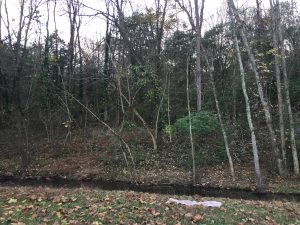 When I last left my sit spot, the forest was barely beginning its transition to Autumn; now, my sit spot was barely recognizable by the rotting log and black walnut tree, now almost bare of leaves. I noted the numerous black walnuts strewn across the ground, more than I could count. I couldn’t even find a place without black walnuts to set up my blanket. Across the creek, most of the trees were bare and the Japanese stilt grass was losing its color and dying off. Only a few trees retained their green colors, and and some were transitioning to yellow. For the most part, the forest seemed completely different, with the majority of the trees missing their leaves. It had happened more rapidly than I could take note of; in my last blog post I noted a few leaves on my tree were starting to turn yellow, and now the leaves were completely gone. I wasn’t even sure where that particular tree was anymore; everywhere I looked there were bare branches, fallen leaves, and sparse bursts of green and gold.
When I last left my sit spot, the forest was barely beginning its transition to Autumn; now, my sit spot was barely recognizable by the rotting log and black walnut tree, now almost bare of leaves. I noted the numerous black walnuts strewn across the ground, more than I could count. I couldn’t even find a place without black walnuts to set up my blanket. Across the creek, most of the trees were bare and the Japanese stilt grass was losing its color and dying off. Only a few trees retained their green colors, and and some were transitioning to yellow. For the most part, the forest seemed completely different, with the majority of the trees missing their leaves. It had happened more rapidly than I could take note of; in my last blog post I noted a few leaves on my tree were starting to turn yellow, and now the leaves were completely gone. I wasn’t even sure where that particular tree was anymore; everywhere I looked there were bare branches, fallen leaves, and sparse bursts of green and gold.
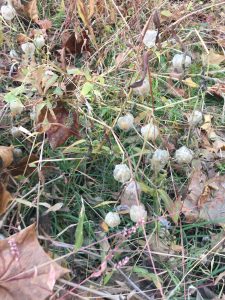 The berry plants I had chosen to follow had completely disappeared. I suppose that I should have expected this; still, I had hoped to watch them develop a little more before they vanished. The tomatillo plants along the bank had turned pale and almost transparent; I could look straight through the pale husk to the round orange fruit inside. There were no apparent similarities in my three objects from last time, except that the tomatillo plants were the same ones I had observed the first time I visited my sit spot.
The berry plants I had chosen to follow had completely disappeared. I suppose that I should have expected this; still, I had hoped to watch them develop a little more before they vanished. The tomatillo plants along the bank had turned pale and almost transparent; I could look straight through the pale husk to the round orange fruit inside. There were no apparent similarities in my three objects from last time, except that the tomatillo plants were the same ones I had observed the first time I visited my sit spot.
While my eyes are closed, I hear a “scritching” sound constantly. It sounds like a squirrel trying to scrape open a nut with its teeth. The sound is coming from the west of my sit spot. There is the quiet sound of crickets, less noisy than before. It’s a peaceful background noise that I find easy to ignore; it’s only because I am intentionally listening that I hear it over the trickling of Carvin Creek and the rustling leaves. My sit spot is so quiet. Occasionally, I hear a crow or a high pitched twit, twit, twit, but it’s rare. Eventually, I hear a rustling coming from the woods to the north of me. I imagine a squirrel foraging through the fallen leaves, searching for a place to bury its winter stash of acorns. The rustling continues for a few minutes, before ceasing altogether, and I imagine the squirrel must have left the ground by scaling a tree.
I paid more attention to “background noises” such as leaves rustling than I ever did before. I found myself curious about the animal moving through the woods, as well as what the sound and pattern of movement could reveal about it’s behavior and identity. What would it be like to listen to animal activity in the woods, and be able to identify the animal and the stories revealed by the sound of its movement? The awareness of my sit spot was similar in that I focused on the noises around me, but this time I didn’t attempt to search for the source of the sound. I simply kept my eyes closed and speculated on the sound’s origins.
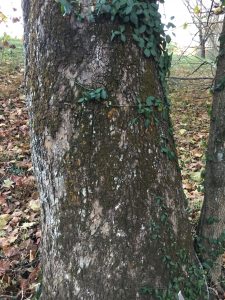 For the next ten minutes, I focused on the sycamore above my sit spot. I walked up to it and examined its unpeeled bark; it was light in some areas, dark in others. There was a dark green moss covering some areas of its surface, and I wondered about the relationship that existed between the moss and this tree. Focusing on the leaves above me, I noticed the sycamore’s Autumn coloration, a mixture of gold, pale green, and brown leaves. Why did the sycamore retain its leaves longer than other trees? Why was the bark peeling? I searched the ground underneath the sycamore, noticing that some of the leaves were blackened and their edges were curling up. I wondered what caused this color in the leaves; was it nutrient loss?
For the next ten minutes, I focused on the sycamore above my sit spot. I walked up to it and examined its unpeeled bark; it was light in some areas, dark in others. There was a dark green moss covering some areas of its surface, and I wondered about the relationship that existed between the moss and this tree. Focusing on the leaves above me, I noticed the sycamore’s Autumn coloration, a mixture of gold, pale green, and brown leaves. Why did the sycamore retain its leaves longer than other trees? Why was the bark peeling? I searched the ground underneath the sycamore, noticing that some of the leaves were blackened and their edges were curling up. I wondered what caused this color in the leaves; was it nutrient loss?
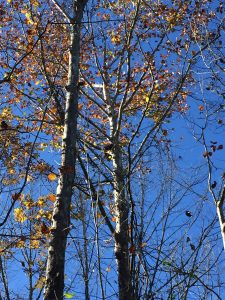 Overall, so much has changed in my sit spot. It happened so rapidly I couldn’t even take note of the gradual changes, since I have not visited my sit spot in several weeks. As I observed the seasonal changes of my sit spot, I lost my focus on the sounds coming from the woods. I would have completely missed the stories hidden in these sounds had I not been tasked with listening closely to my surroundings. However, when I listened closely to these sounds and theorized on their origins, I was surprised by how much I was able to piece together simply by paying attention to the rustling of leaves in the woods. It gave me a new perspective on my sit spot and I will definitely pay more attention to any sounds in my surroundings in the future.
Overall, so much has changed in my sit spot. It happened so rapidly I couldn’t even take note of the gradual changes, since I have not visited my sit spot in several weeks. As I observed the seasonal changes of my sit spot, I lost my focus on the sounds coming from the woods. I would have completely missed the stories hidden in these sounds had I not been tasked with listening closely to my surroundings. However, when I listened closely to these sounds and theorized on their origins, I was surprised by how much I was able to piece together simply by paying attention to the rustling of leaves in the woods. It gave me a new perspective on my sit spot and I will definitely pay more attention to any sounds in my surroundings in the future.

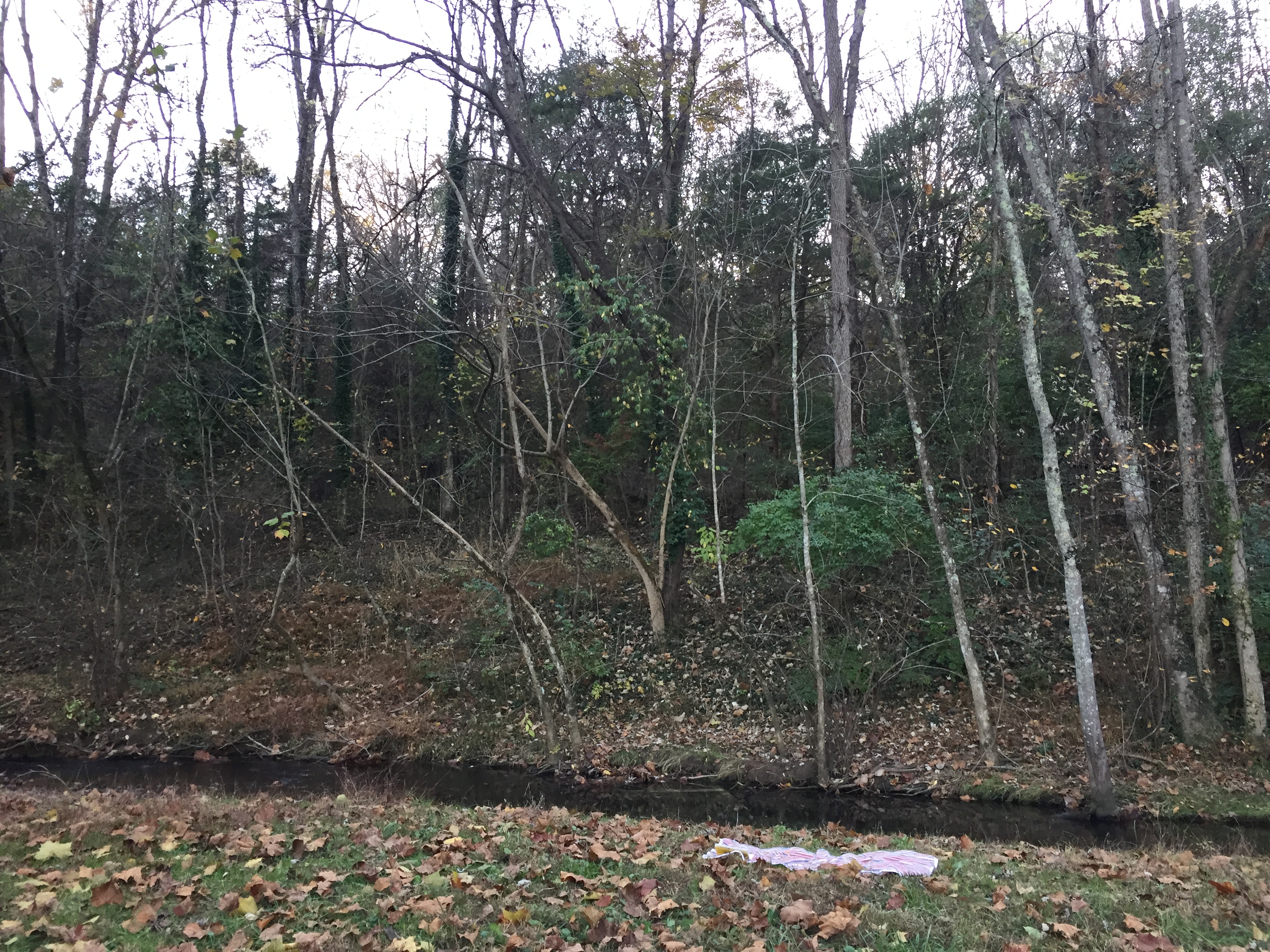
it’s interesting how seemingly quickly a part of the landscape can disappear completely, like the berry bushes you had intended to follow. nothing is permanent
Great blog Amelia! I liked that you talked about the rate at which the sycamore leaves were decomposing. I am having a similar issue where my tree of focus is not losing its leaves. I would like to know what biochemical differences cause different trees’ leaves to decompose at different rates. Now that I think about it, the sycamores I have seen also still have most of their leaves.